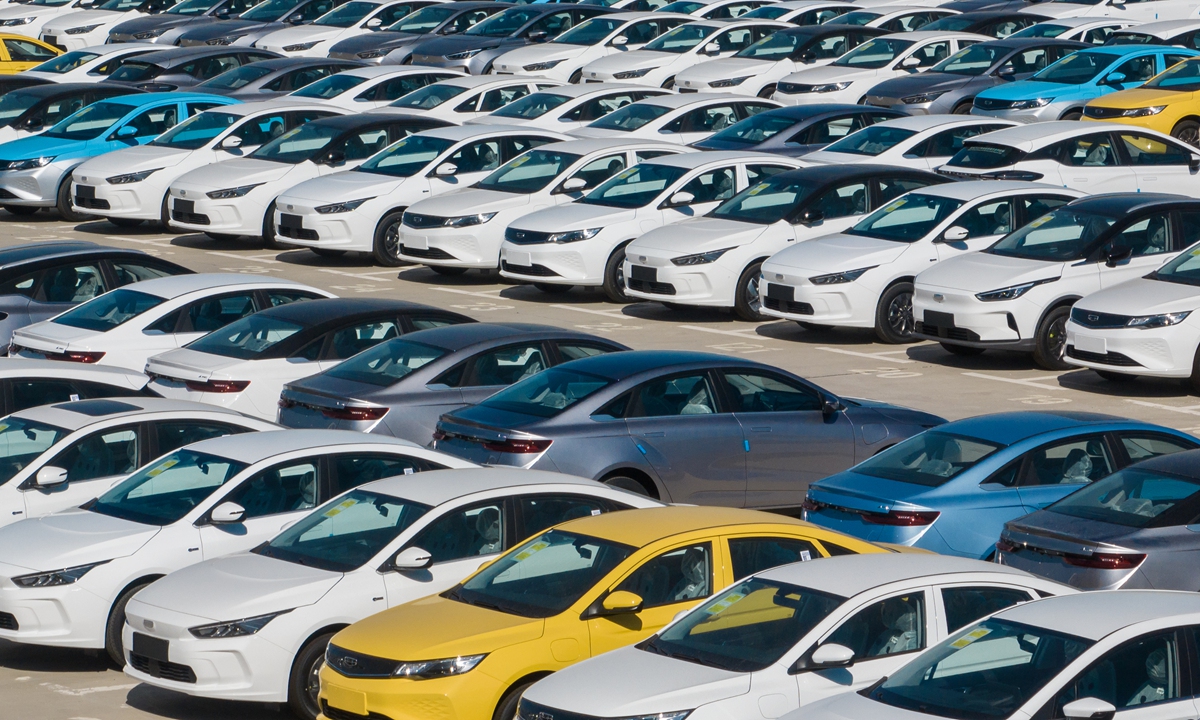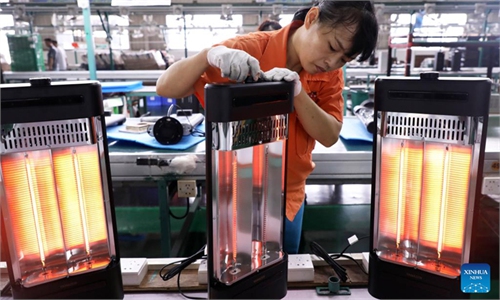China’s new-energy sector maintains robust growth in Nov; rapid recovery expected: official

New-energy vehicles in a factory in Jinzhong, North China's Shanxi Province on September 7, 2022 Photo: VCG
China’s new-energy products output saw robust growth in November despite sporadic COVID-19 flare-ups, further demonstrating the resilience of the country’s industrial economy, the National Bureau of Statistics (NBS) said on Thursday.
In November, the output of new-energy vehicles increased 60.5 percent year-on-year, and the production of new-energy products such as charging piles rose 69 percent, with photovoltaic batteries up 68.6 percent and wind turbines growing 50.7 percent, data from the NBS showed.
In addition, China accelerated the production of new-material products. For instance, the output of polysilicon for the solar industry saw a year-on-year rise of 103.4 percent, up 7.2 percentage points from October, while that of single crystal silicon rose 77.4 percent, 17.5 percentage points higher than the previous month.
Output of high-tech products also witnessed faster growth, with civilian aircraft production increasing 30.8 percent and civilian drones up 24.3 percent year-on-year in November, according to official data.
“The new-energy industry – especially NEVs – has led the development of China’s industrial economy, boosting the demand for chips and new materials and supporting infrastructure construction such as smart grids, energy storage systems and other energy and power facilities,” Tian Yun, a veteran economist, told the Global Times on Thursday.
The expert noted that the faster the growth of the new-energy industry, the stronger the impetus for the recovery of the overall economy.
Affected by the epidemic as well as sluggish market demand, industrial value-added grew 2.2 percent year-on-year in November, down 2.8 percentage points from October.
However, the stability of the country’s industrial sector growth remained unchanged. From January to November, industrial value-added increased 3.8 percent year-on-year, down slightly by 0.2 percentage points from January to October.
Tian said that the slowdown of industrial output growth in November was mainly due to weak market demand and the shrinking of new orders.
“The government should continue to boost domestic demand. Both domestic consumption and public investment need to be expanded to ensure the smooth development of China’s industrial economy,” Tian added.
In November, the production of daily necessities maintained growth, and the policy to ensure energy supply continued to play a vital role in guaranteeing energy for production and residential use.
According to the NBS, the value-added of the mining industry rose 5.9 percent year-on-year, 1.9 percentage points higher than that of October. The oil and gas extraction industry grew 7.2 percent year-on-year, accelerating 0.5 percentage points from the previous month.
“With the implementation of optimized measures for epidemic prevention and control as well as policies to stabilize the economy, the industrial economy is expected to continue to recover,” Tang Weiwei, a senior official from the NBS, said on Thursday.
Tang added that the country will better coordinate epidemic prevention and control and economic development, improving the resilience and security of industry and supply chains to boost market confidence and enhance the vitality of market players and to continuously promote the high-quality development of the industrial economy.



